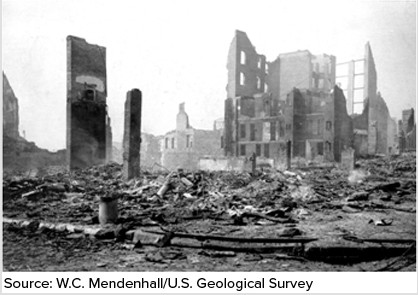Why are moist and dry adiabatic rates of cooling different??
What will be an ideal response?
ANSWER: ?If a parcel of air expands and cools, or compresses and warms, with no interchange of heat with its surroundings, this situation is called an adiabatic process. As long as the air in the parcel is unsaturated (the relative humidity is less than 100 percent), the rate of adiabatic cooling or warming remains constant. This rate of heating or cooling is about 10 degrees Celsius for every 1000 m of change in elevation (5.5 degrees Fahrenheit per 1000 ft). Because this rate applies only to unsaturated air, it is called the dry adiabatic rate. As the rising air cools, its relative humidity increases as the air temperature approaches the dew-point temperature. If the rising air cools to its dew-point temperature, the relative humidity becomes 100 percent. Further lifting results in condensation; a cloud forms, and latent heat is released inside the rising air parcel. Because the heat added during condensation offsets some of the cooling due to expansion, the air no longer cools at the dry adiabatic rate but at a lesser rate called the moist adiabatic rate. If a saturated parcel containing water droplets were to sink, it would compress and warm at the moist adiabatic rate because evaporation of the liquid droplets would offset the rate of compressional warming. Hence, the rate at which rising or sinking saturated air changes temperature—the moist adiabatic rate—is less than the dry adiabatic rate.
You might also like to view...
Brazil's vast ____________________ Basin contains more than 40% of the world's remaining tropical forests.
Fill in the blank(s) with the appropriate word(s).
Submarine canyons ____
A) always run parallel to the coastline B) are typically small in size C) are never located just offshore of the mouth of a river D) cut into the continental shelf and slope, often terminating on the deep seafloor
Which of these minerals would be the main component in the cement slab in your house?
A. gypsum B. calcite C. quartz D. hematite E. clay minerals
What likely caused much of the damage shown in this photograph in the 1906 San Francisco earthquake?
A. ground ruptures, cracks, and fissures B. fires that broke out after the earthquake C. a breakdown in the computerized warning system D. a tsunami